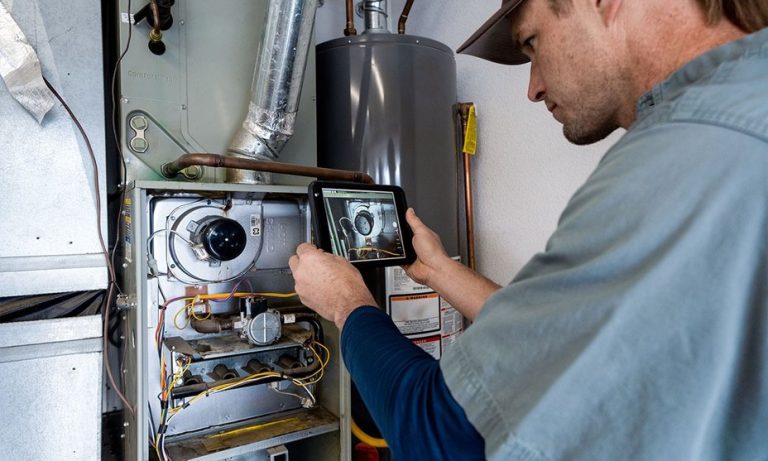For those new to home heating systems, understanding how a furnace functions within an HVAC setup can feel overwhelming. But with a bit of guidance, the subject becomes not only approachable, but genuinely empowering. Heating, Ventilation, and Air Conditioning—collectively known as HVAC—comprise the essential systems that maintain indoor comfort, and at the heart of any heating system in colder climates is the furnace. If you’re embarking on your first experience with homeownership, renovations, or simply aiming to improve your understanding of your home’s mechanical workings, this guide will introduce you to the foundational aspects of furnaces in the HVAC world.
At its core, a furnace is a device designed to heat air and distribute it throughout a building via a system of ducts. While the concept may sound simple, the technology behind it is nuanced and has evolved significantly over the decades. Modern furnaces are highly efficient machines built for performance, safety, and sustainability. To begin, it’s important to understand that there are several types of furnaces, categorized primarily by the fuel they use: natural gas, oil, electric, and propane.
Natural gas furnaces are the most commonly used in North America, thanks to the widespread availability of gas lines and the fuel’s relative affordability. These units ignite gas in a burner, producing heat that warms up a metal exchanger. Air from the home is blown over this heat exchanger and then circulated throughout the house. Gas furnaces tend to be efficient and cost-effective, particularly in regions where natural gas is inexpensive.
Oil furnaces operate similarly but use heating oil instead of gas. These are more common in the Northeastern United States and rural areas where gas infrastructure may be lacking. Though often more expensive to run than gas models, oil furnaces can generate intense heat and may be more suitable for especially cold environments.
Electric furnaces, while less common in colder climates due to their higher operational costs, have the benefit of being simpler in design and installation. They generate heat using electric resistance coils and are considered cleaner, in terms of indoor air quality, since they don’t rely on combustion. They are often used in smaller homes, apartments, or areas with mild winters.
Propane furnaces are essentially a close relative of gas units but are designed for homes without access to a natural gas line. These systems use stored liquid propane and can offer efficient heating performance with lower environmental emissions compared to older oil models.
Once fuel type is considered, efficiency becomes the next key factor in selecting and understanding a furnace. This is measured by the Annual Fuel Utilization Efficiency (AFUE) rating, which indicates how much of the fuel consumed is converted into usable heat. Older models might have AFUE ratings as low as 60-70%, meaning a significant portion of energy is lost during operation. Modern high-efficiency furnaces can boast ratings of 90% or more, making them vastly more economical and environmentally friendly in the long term. Many homeowners find that investing in a high-efficiency model, while initially more expensive, pays off in lower utility bills and fewer emissions.
A crucial component of any furnace system is the blower motor, which pushes the warmed air through the ductwork and into each room. There are different types of blower motors, with variable-speed models offering greater comfort and energy savings. Unlike single-speed motors that run at full blast or not at all, variable-speed motors adjust airflow gradually, maintaining more consistent indoor temperatures and reducing energy spikes.
Also worth noting is the role of air filters within the furnace. These not only protect the internal components of the system but also help maintain indoor air quality. A clogged or neglected air filter can cause the system to work harder than necessary, reducing its lifespan and efficiency. Changing filters regularly—every 1 to 3 months, depending on usage—is one of the simplest yet most impactful maintenance habits a homeowner can adopt.
Another vital consideration for those new to HVAC systems is the thermostat. A furnace doesn’t act independently; it responds to the thermostat’s commands. While traditional thermostats offer basic control, modern smart thermostats allow users to program temperature schedules, monitor energy usage, and adjust settings remotely through smartphone apps. This connectivity not only adds convenience but also enhances energy management, often resulting in noticeable cost savings.
Safety is paramount when it comes to furnace operation. All combustion-based furnaces—gas, oil, or propane—must be installed with proper ventilation to prevent the buildup of carbon monoxide, a potentially lethal gas. This is why professional installation and regular inspection are non-negotiable. Many modern units come equipped with safety switches and carbon monoxide detectors, providing added peace of mind.
When it comes to lifespan, a well-maintained furnace can last anywhere from 15 to 30 years, depending on the type and quality of the system. Regular service by a certified HVAC technician, including annual inspections and cleanings, is essential to prolonging the life of your equipment and maintaining efficient performance.
Ultimately, understanding your furnace is about more than knowing how to adjust the temperature on a cold morning. It’s about recognizing how your home functions as a living system, where comfort, efficiency, and sustainability intersect. Whether you’re considering a new installation, preparing for seasonal maintenance, or simply curious about how your home stays warm, taking the time to learn the basics of furnace operation in the HVAC system is a valuable investment.
As heating technology continues to evolve, with advancements in energy efficiency and smart integration, homeowners today have more control and options than ever before. With this guide as your starting point, you’re well on your way to making informed, confident decisions that will enhance your comfort, protect your investment, and contribute to a more efficient and intelligent home.

